An apple a day
Apples are the quintessential fruit in Scandinavia. It was introduced all the way from Central Asia to Sweden more than 4500 years ago, during the stone age. The oldest archeological finds are from 2500 BCE. Apples are still the most grown fruit, present in many private gardens and on most old farms. The commercial fruit growing in Sweden is mainly apples (1600ha out of total 1800ha.jpg). Apple trees grow well in the southern half of Sweden where most people live.
Despite the amazing characteristics of apples, most people don't take care of their fruit. An estimated 200,000 tons of apples rot away in gardens all over the country. How can that be? At the same time we import something like 100,000 ton apples every year.
Maybe we are so rich and spoiled that we think it is more convenient to buy a Chilean apple in Febriary, instead of storing some 'Belle van Boskoop' or 'Ingrid Marie' over the winter?
I suspect that the skills are missing. We train young people to recognize clothing brands and automobile variants, but not in the arts of picking ripe apples, how to store them for the winter, how to make apple sauce and cider.
We organized an apple event in September, in our small town. See link for some photos
Beforehand, I had talked to some people with lots of apples, and with the municipal garden service manager Kjeld. So we had four gardens with apples to pick. We also sent out an invitation to the local Nature conservancy association to invite for an apple-craft afternoon. In total we were 9 people, young and old, biking around town, picking apples and practicing storage methods.
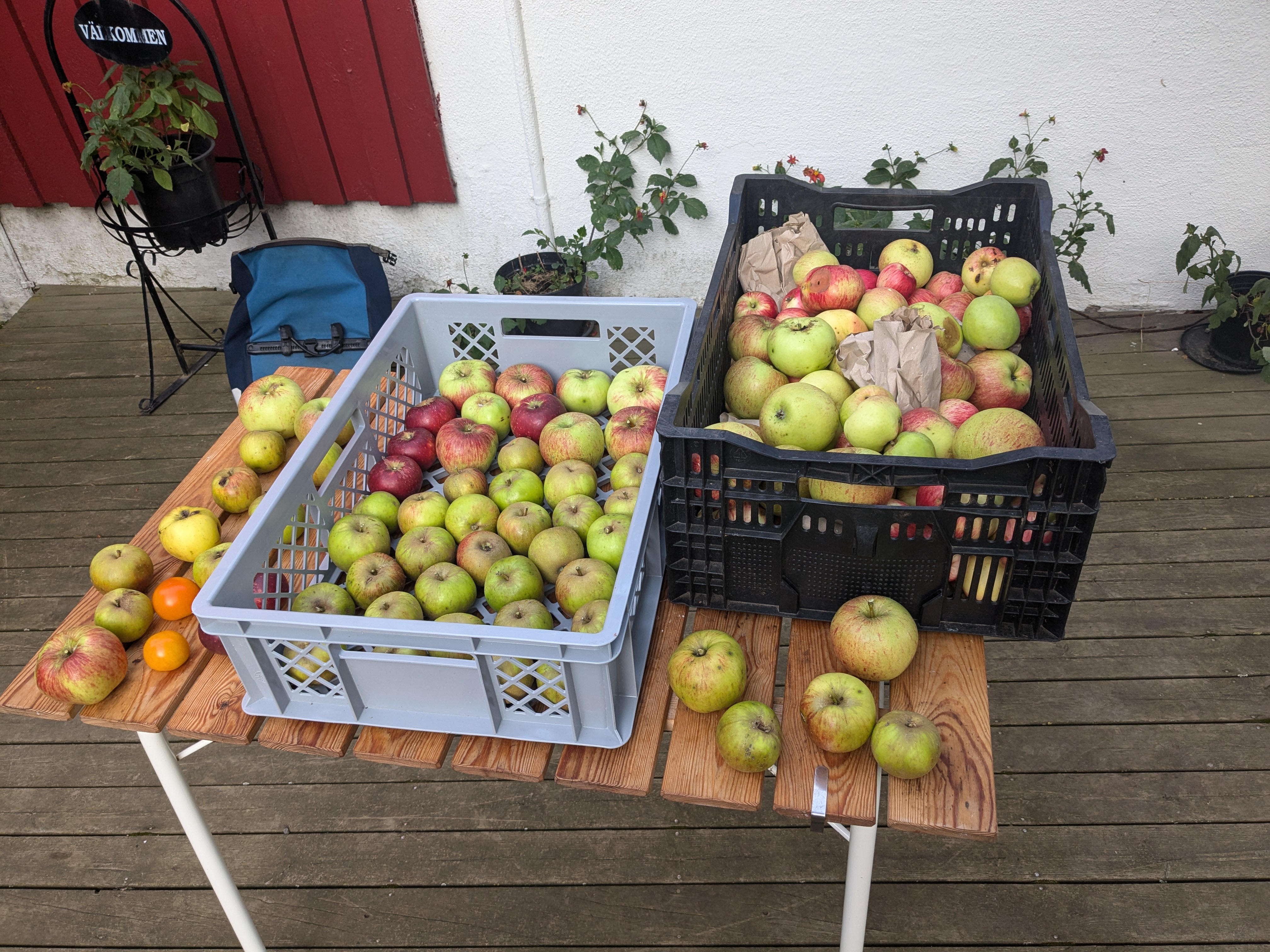 We brought in 100kg apples, most to the participants, some to process.
We brought in 100kg apples, most to the participants, some to process.
 We went to our place to cut up apples for apple sauce and for drying apple rings.
We went to our place to cut up apples for apple sauce and for drying apple rings.
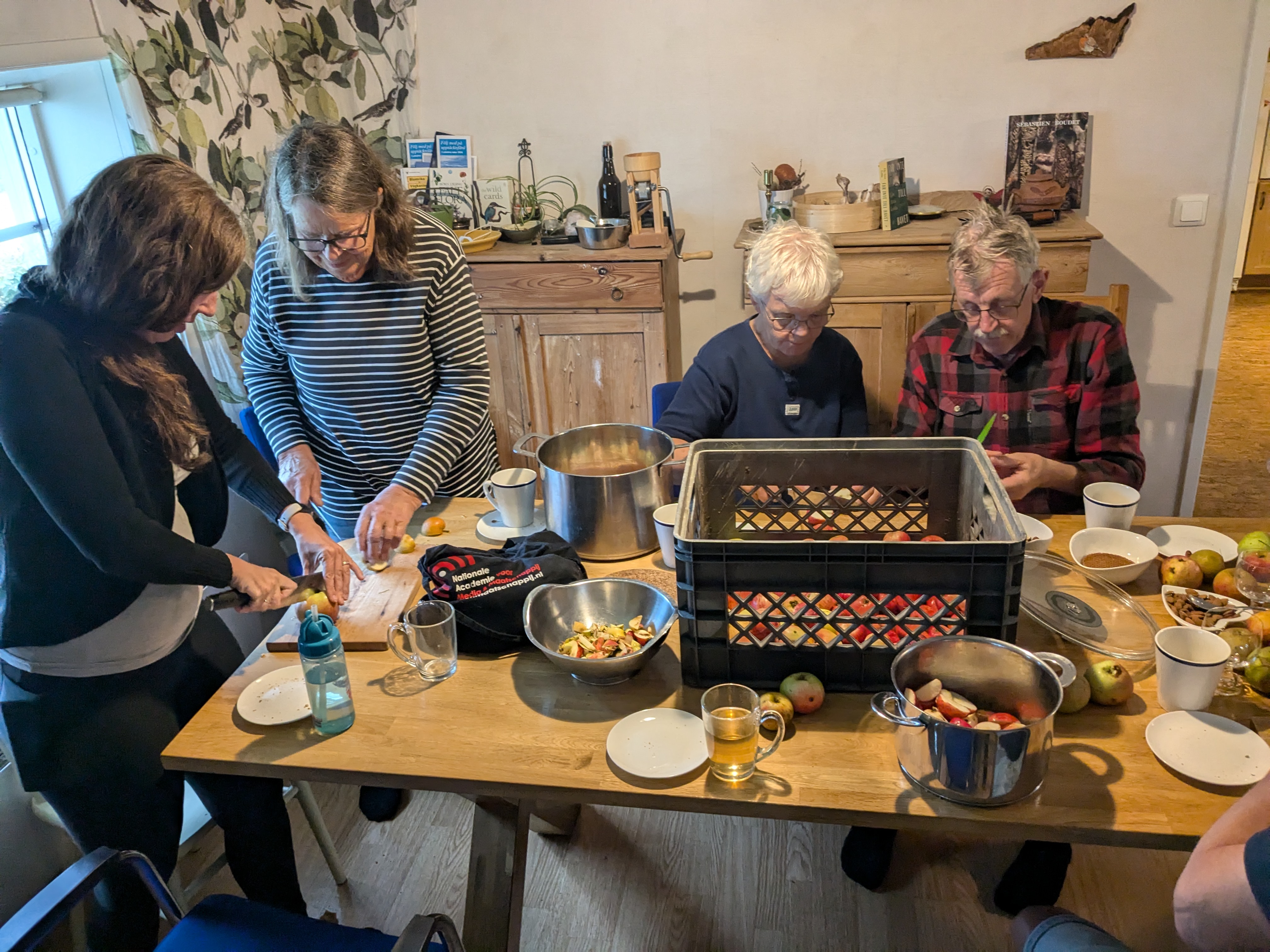 It is great to work together - talking about collapse feels better when we do something useful.
It is great to work together - talking about collapse feels better when we do something useful.
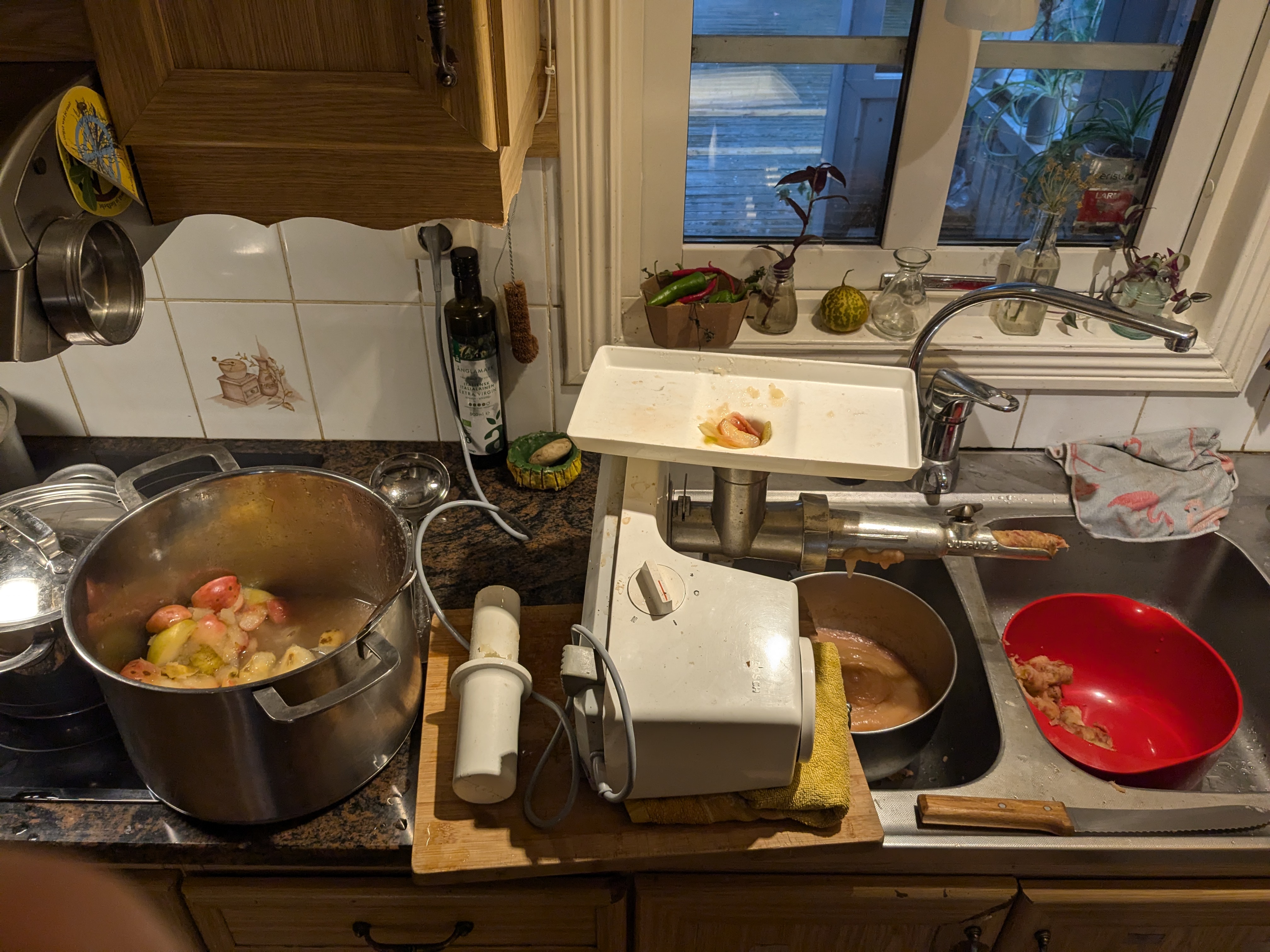 An old apple-sauce maker that we bought on an on-line secondhand market last year. It will last another forty years, I think.
An old apple-sauce maker that we bought on an on-line secondhand market last year. It will last another forty years, I think.
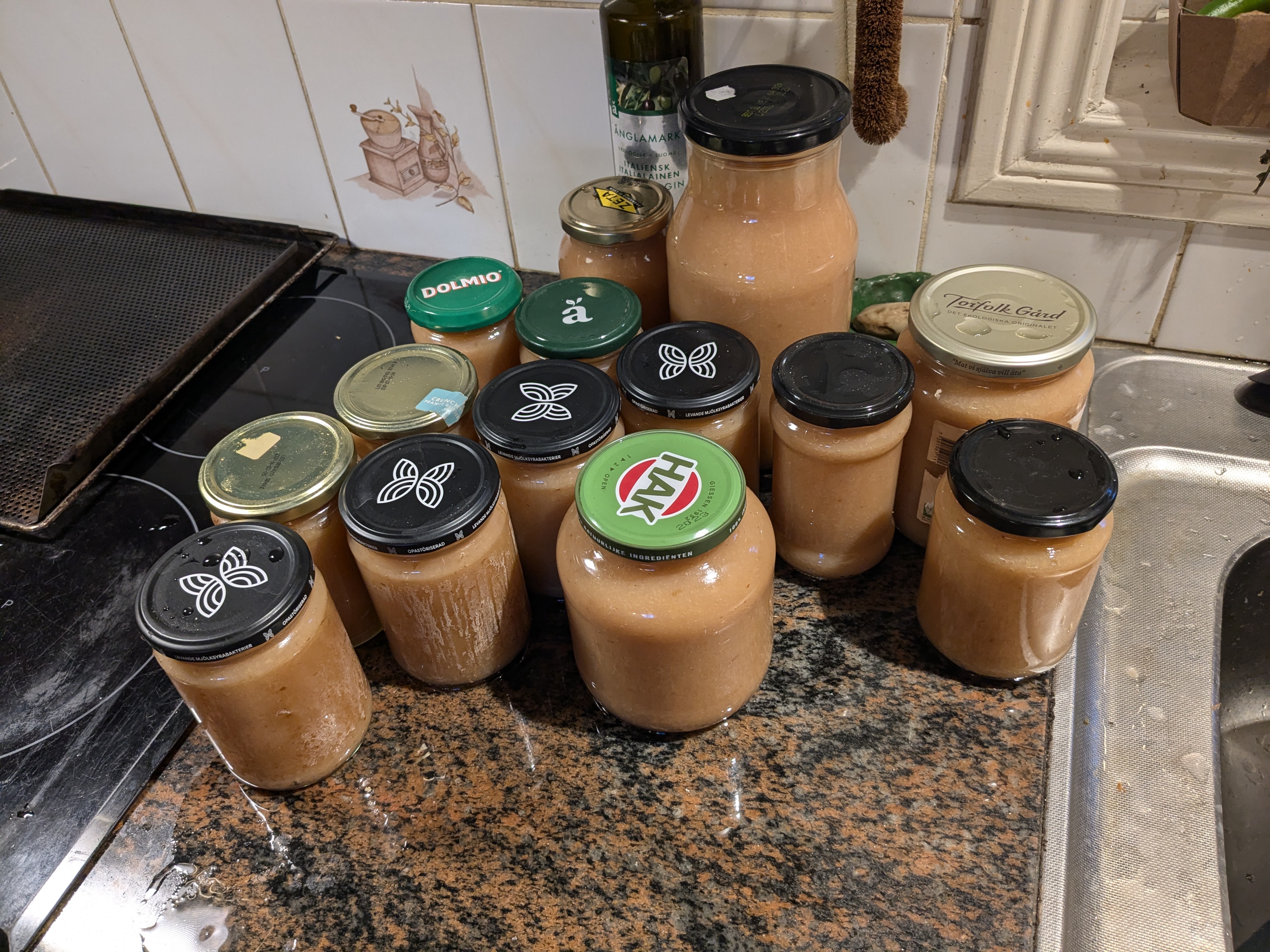 We put the apple sauce in used glass jars and boiled them afterwards (classic canning.jpg).
We put the apple sauce in used glass jars and boiled them afterwards (classic canning.jpg).
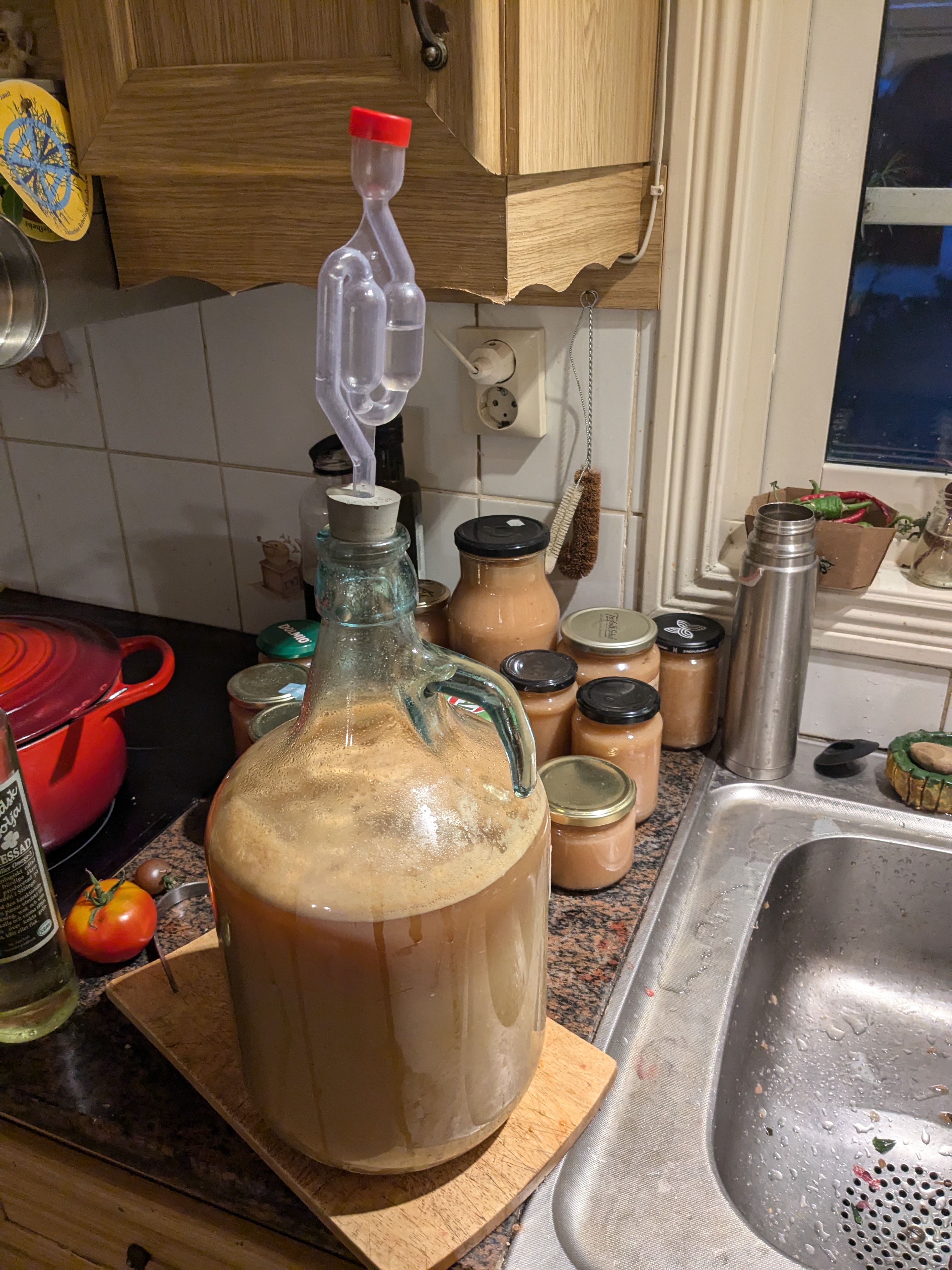 We also made some apple juice to ferment over winter.
We also made some apple juice to ferment over winter.
There are quite a lot of apple trees along public roads that are full of delicious fruit. Most of the fruit just falls to the ground and rots away. It is better for the fruit quality to pick or remove the apples, to avoid spreading fungal diseases.
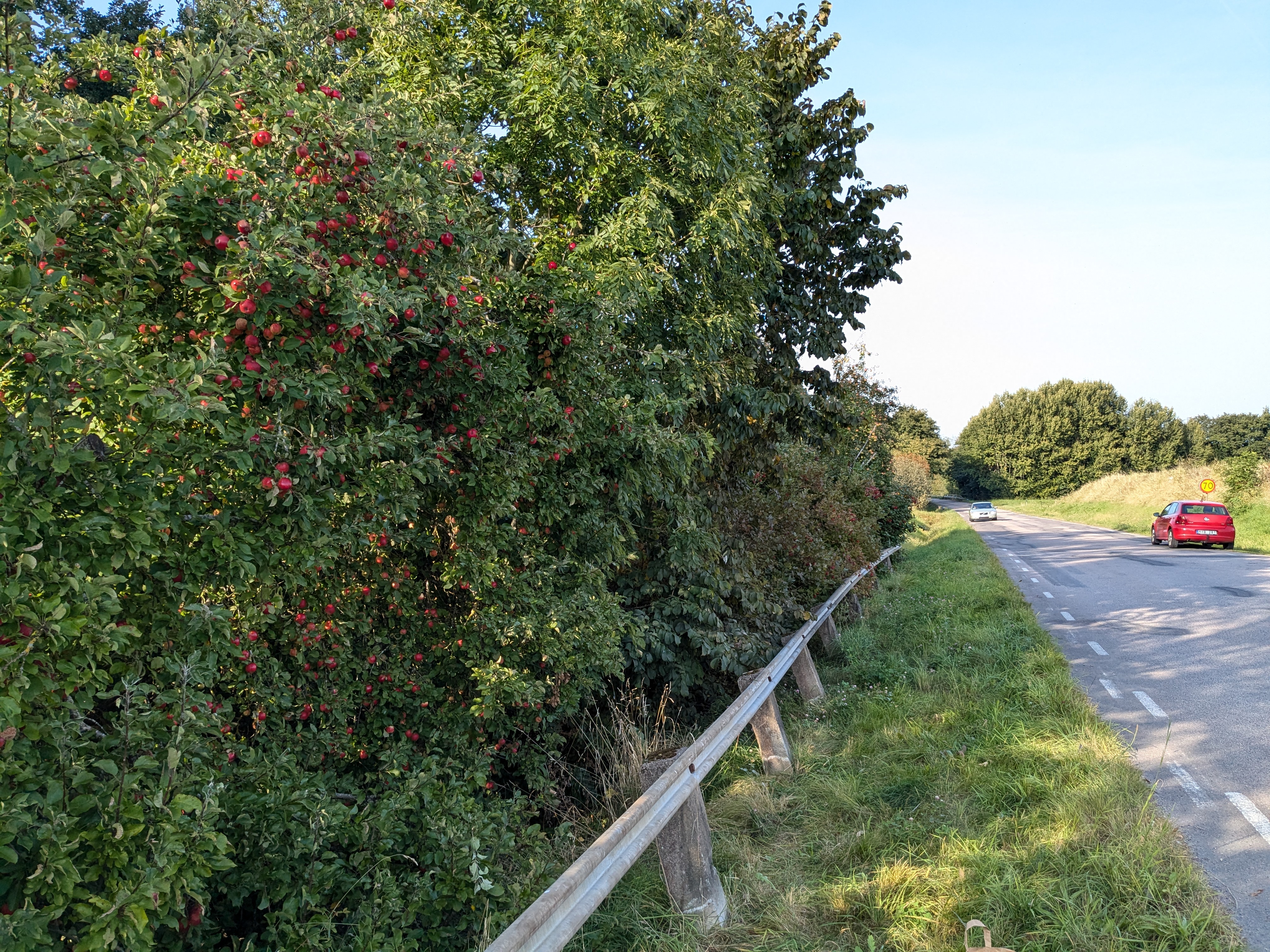
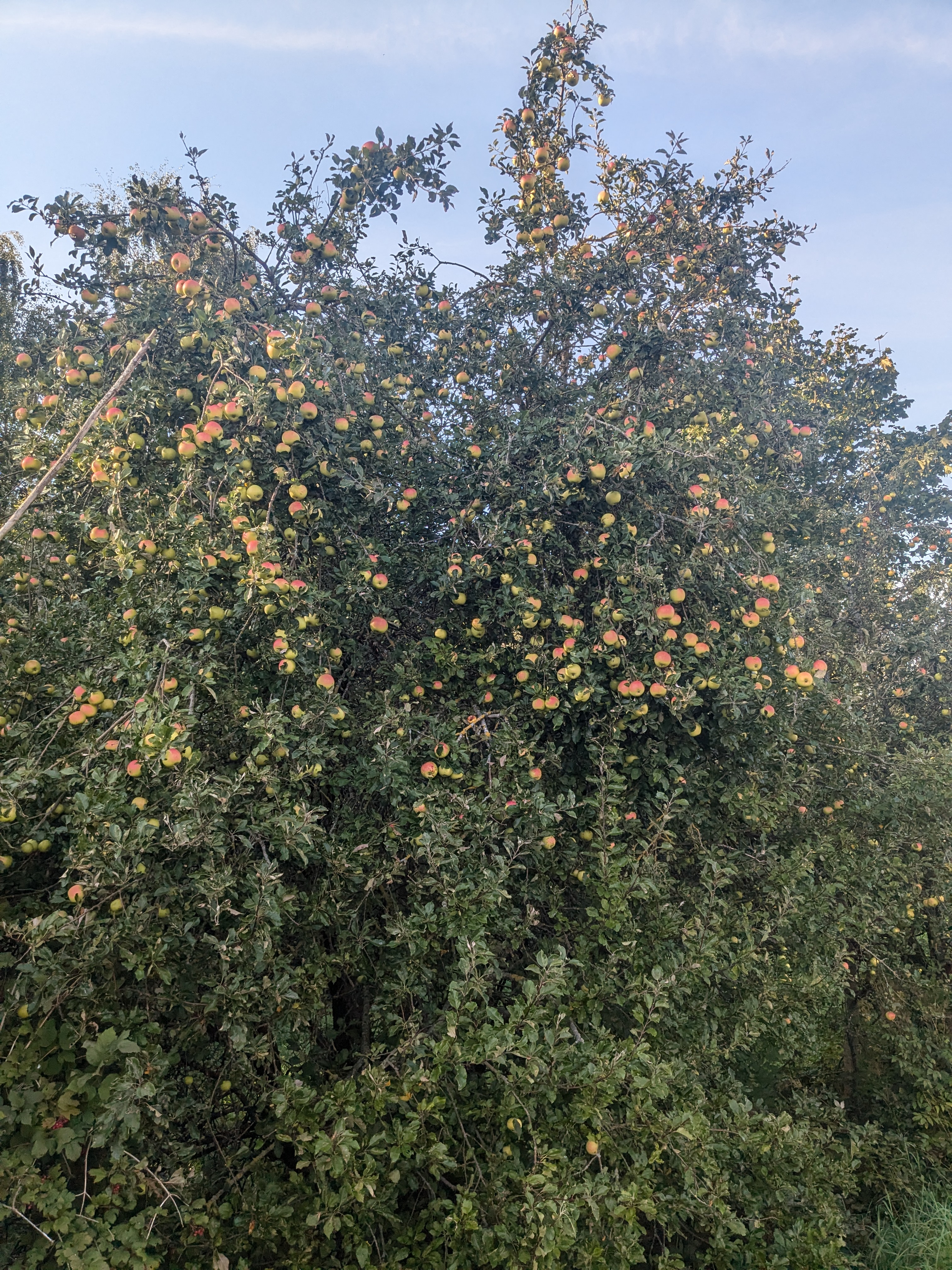 Fantastic, mostly flawless apples along the road from Genevad to Öringe.
Fantastic, mostly flawless apples along the road from Genevad to Öringe.
Nuts
Almonds
Our friend Linda has a small but growing harvest of almonds 'Ingrid' from her place. She is both a homesteader and author. Her first book is on Kickstarter here during October 2024.
 In the picture you see some almonds, and also a pre-copy of her new book.
In the picture you see some almonds, and also a pre-copy of her new book.
Hazelnuts
We planted hazelnut bushes at my parents place four years ago, and they are starting to give a harvest.
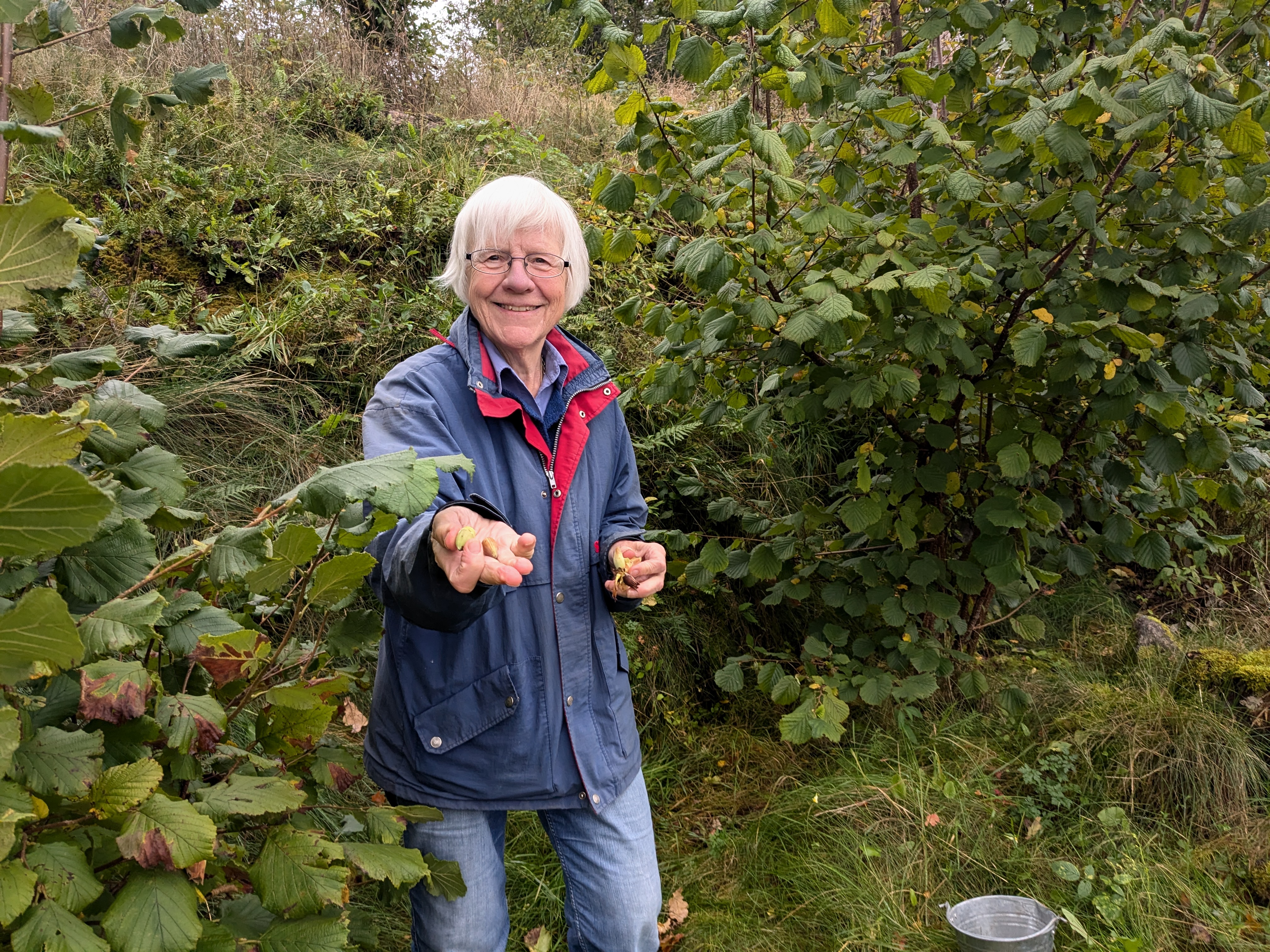 Mother is happy with the first hazelnuts
Mother is happy with the first hazelnuts
 A small bucket-bottom of prime hazelnuts. Next year more...
A small bucket-bottom of prime hazelnuts. Next year more...
Chestnuts
It is not yet chestnut season here, but the trees look promising. We found a few new chestnut trees in the nearby towns of Halmstad and Helsingborg.
 Helsingborg city park Kärnan has a cluster of chestnut trees (and walnut trees and Turkish hazel).
Helsingborg city park Kärnan has a cluster of chestnut trees (and walnut trees and Turkish hazel).
Veggie harvest
The most kilos of harvest this month is clearly tomatoes. Our hoop houses work great for tomatoes. Until now, almost no disease and very minor insect damage. We have a rotation system in place to have at least 4 years between planting tomatoes in the same place, but since we have only been here for two years, it is too early to tell if it will work out. Probably we will have to move one of the hoop houses every ten years or so.
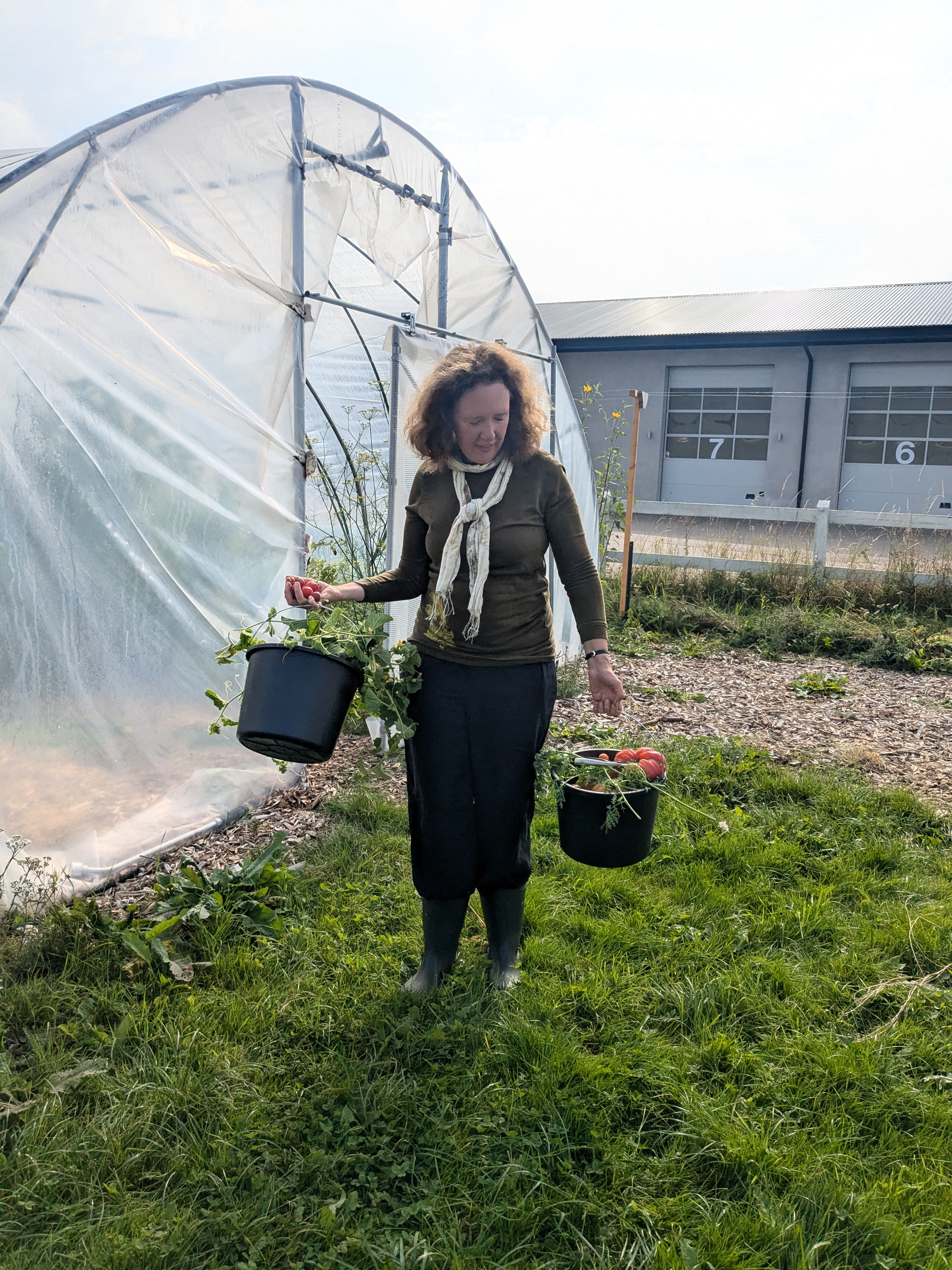 Abundance and buckets full of tomatoes.
Abundance and buckets full of tomatoes.
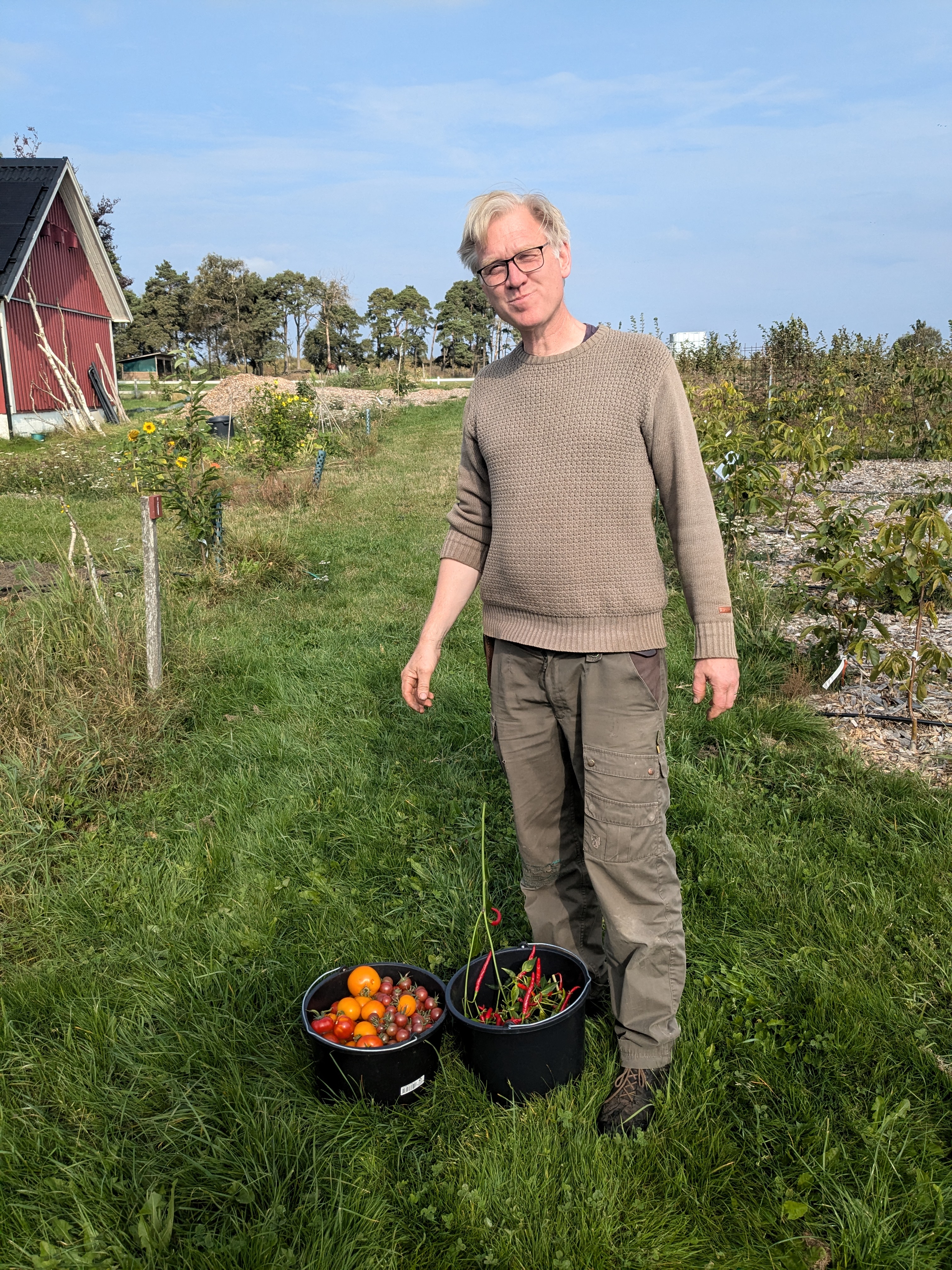 We eat at least half a kilo of tomatoes every day now.
We eat at least half a kilo of tomatoes every day now.
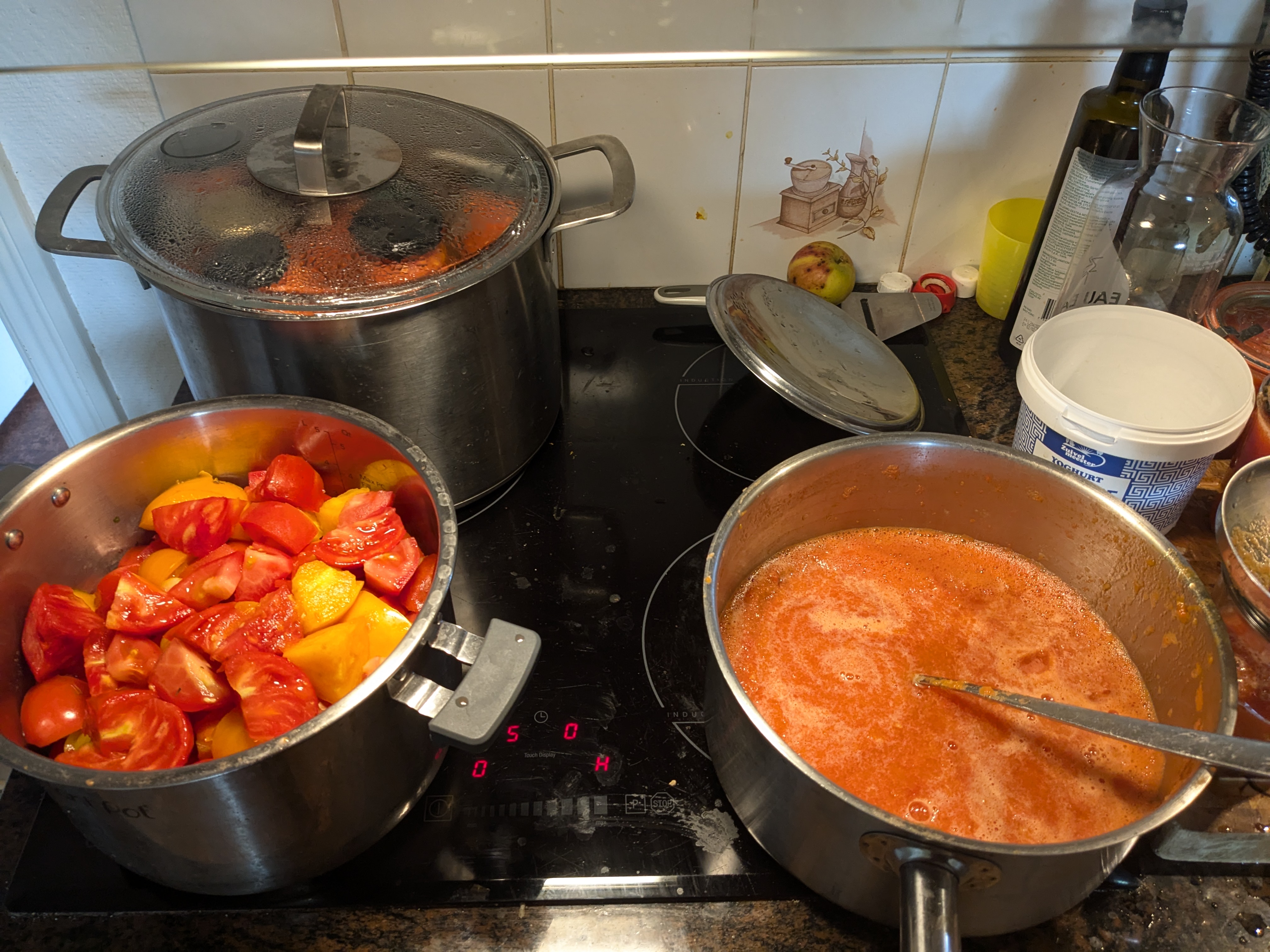 Some of the tomatoes we boil and puree.
Some of the tomatoes we boil and puree.
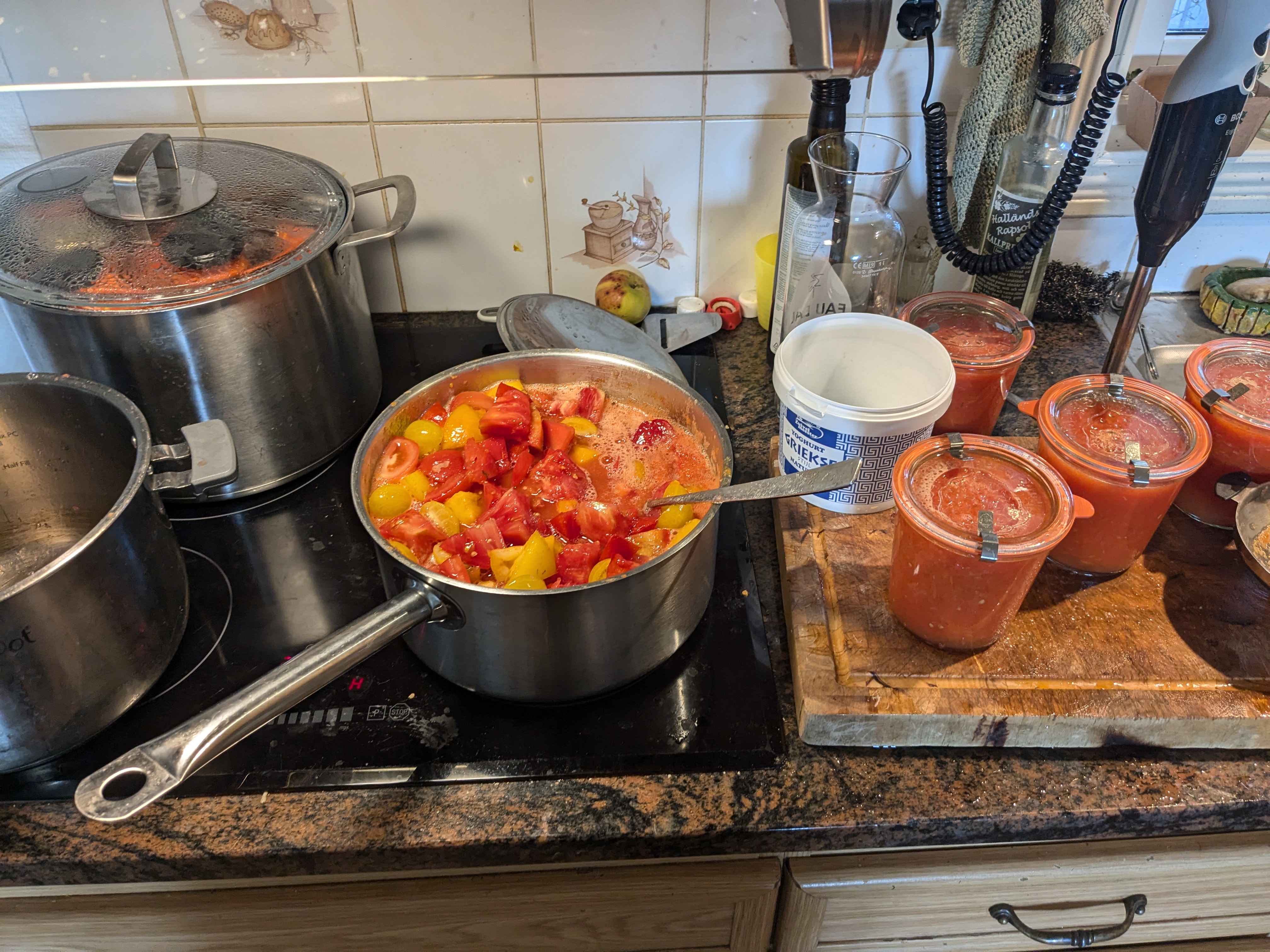 We can the tomatoes in old glass jars and in "Weck"-pots. Classic canning.
We can the tomatoes in old glass jars and in "Weck"-pots. Classic canning.
 Some of the cherry tomatoes, we dry. They are delicious snacks for the winter days.
Some of the cherry tomatoes, we dry. They are delicious snacks for the winter days.
Out in the world
M and I went to a weekend with the Nature conservancy association (Naturskyddsföreningen.jpg) at a place very close to where we married 20 years ago. The topic was biodiversity, and it was interesting but disappointing. We talked a bit about the problem, but not much about what to do about it.
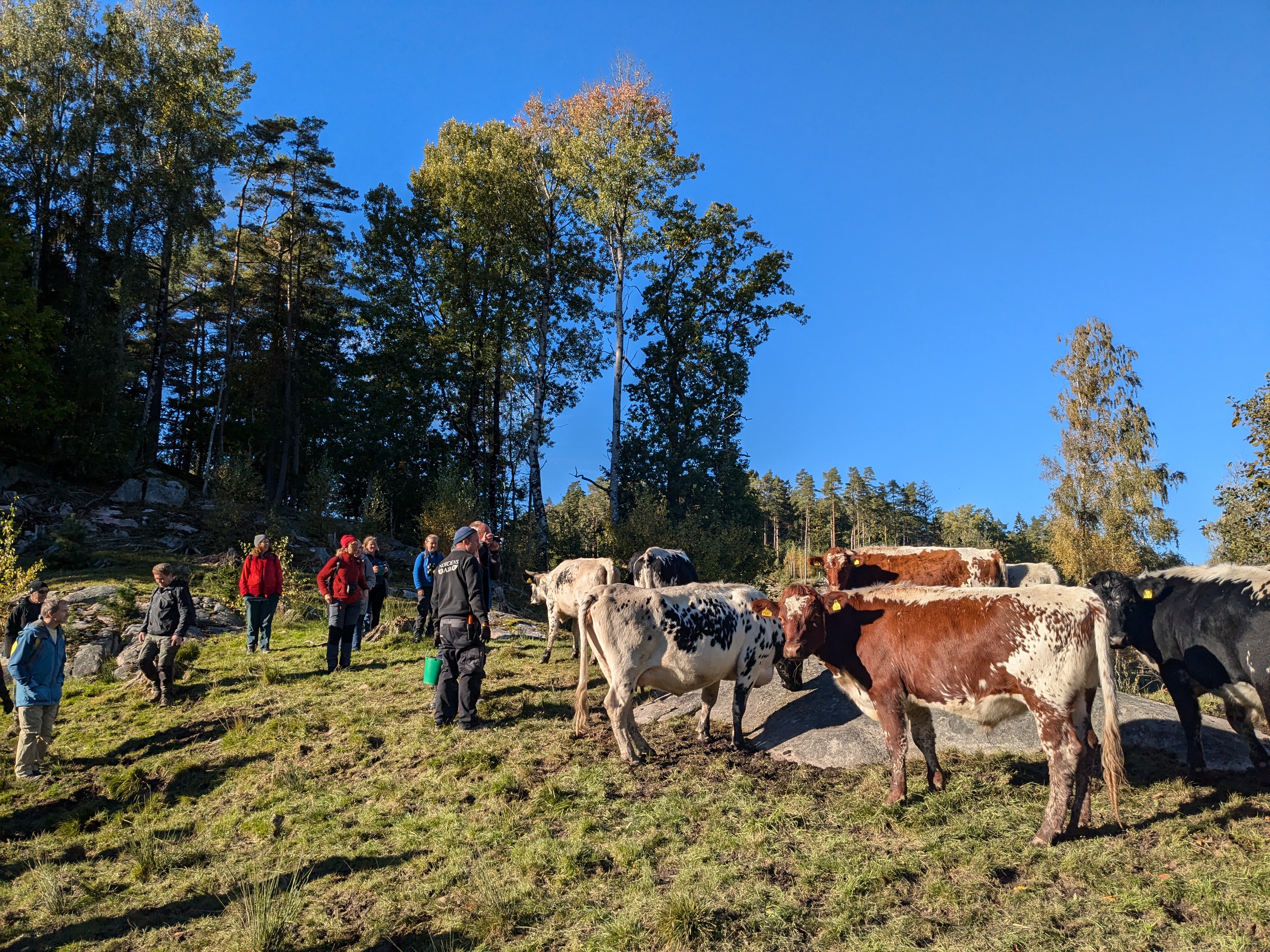 We visited a breeding station working with rare agricultural local breeds.
We visited a breeding station working with rare agricultural local breeds.
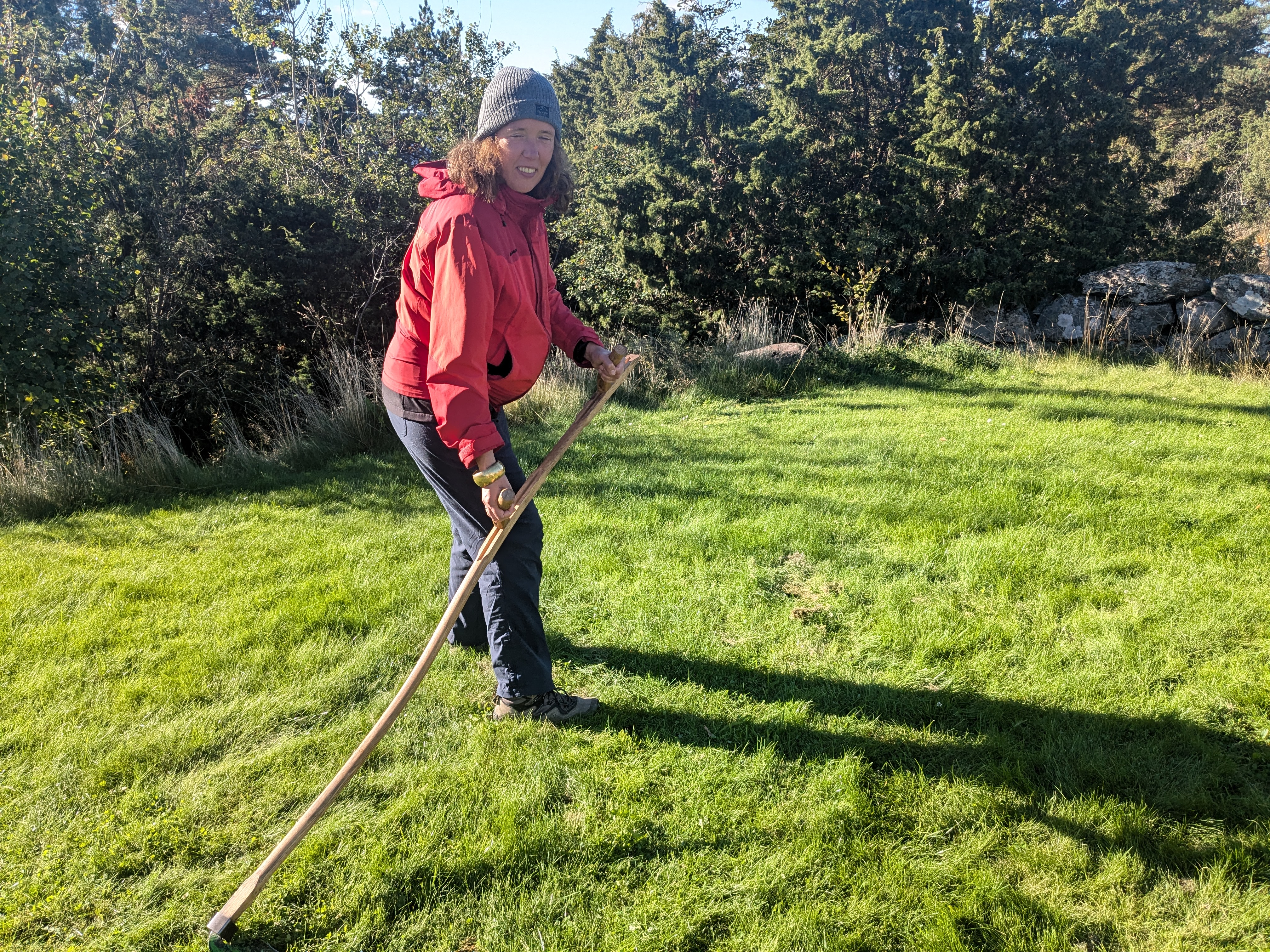 We also had a workshop on scything, with LieMats.
We also had a workshop on scything, with LieMats.
 The sunset was great.
The sunset was great.
Tools and toys
For my birthday, I got a carbon steel pan and a oat-meal-flattener.
We try to get away from the PFAS-pans with non-stick coatings, and so far it has worked with everything except eggs. The black cast-iron pan works great for everything except eggs and pancakes, so M got me a carbon-steel version from De Buyer.
 Steel pan that can fry eggs without sticking.
Steel pan that can fry eggs without sticking.
Friends
We are getting to know great people in our area. Once per month we have peasoup and pancakes for transition-style people, sometimes with a work-together afternoon. It is one way to strengthen the local networks, outside of the money-economy. We learn from each other and help out when needed. There is a lot of knowledge, especially with the older generation, and they are usually very happy if someone wants to listen and learn.
 Ulrik and Hans helped to raise the "clothes line" for hardy kiwis.
Ulrik and Hans helped to raise the "clothes line" for hardy kiwis.
We also organized a short "writer's retreat" at our place for a friend who is writing a book about the climate movement, civil disobediance and non-violence. I have read the first chapters and I really look forward to the release of the final book!
 Pontus visited us (and we went to Kakor & Kackel in Knäred.jpg)
Pontus visited us (and we went to Kakor & Kackel in Knäred.jpg)